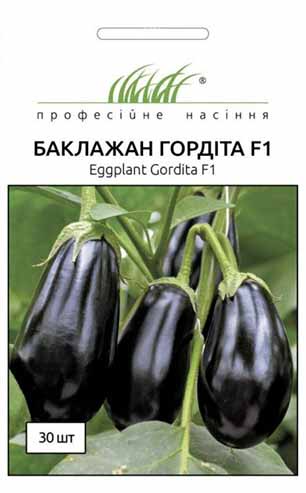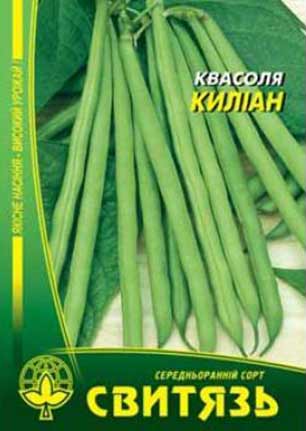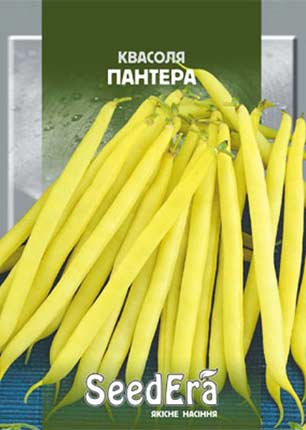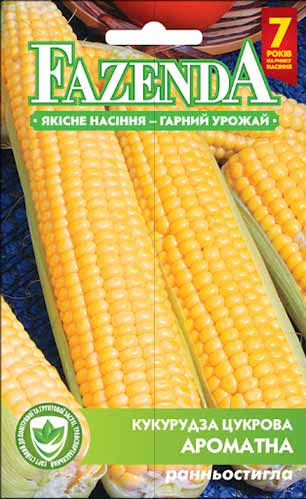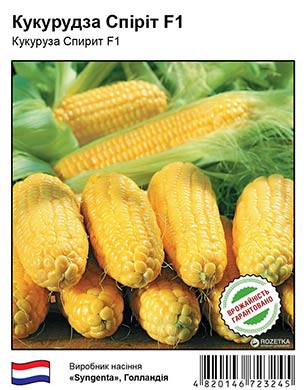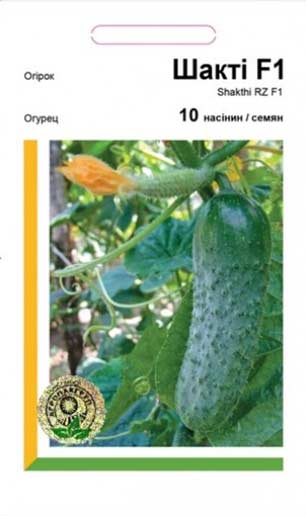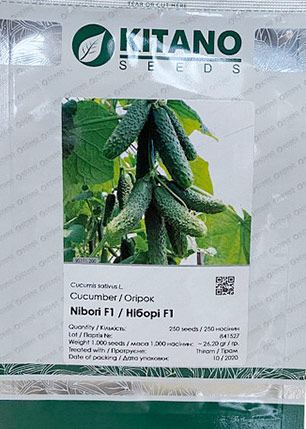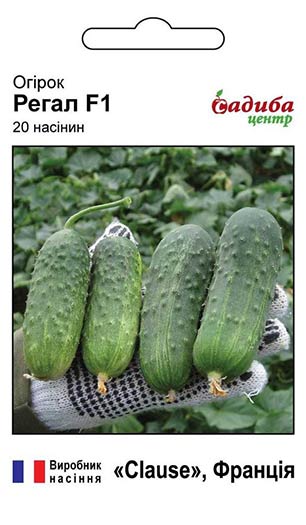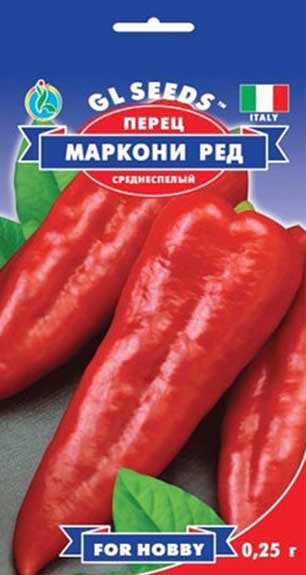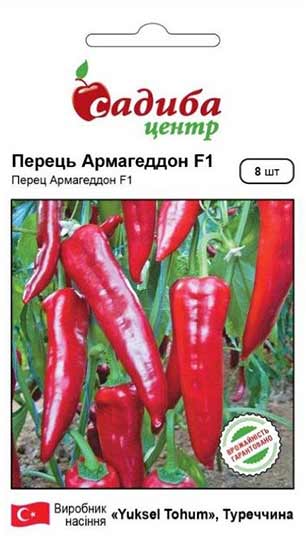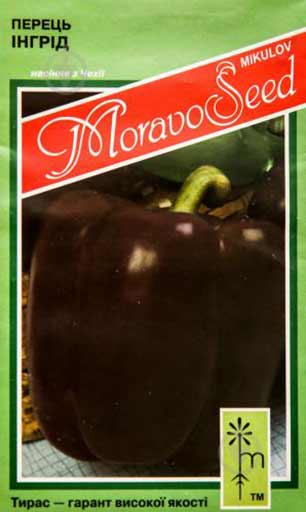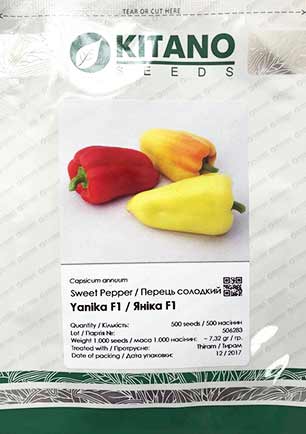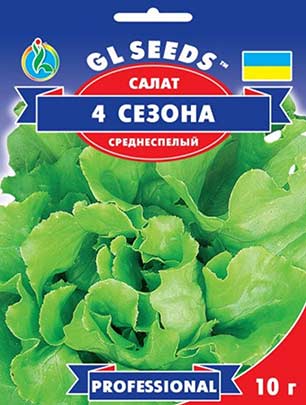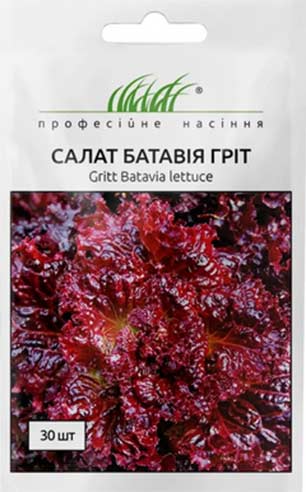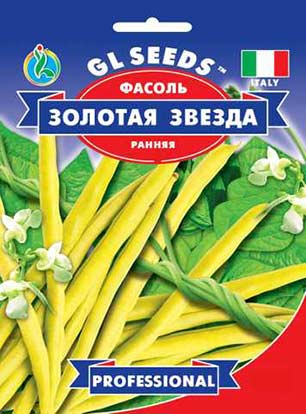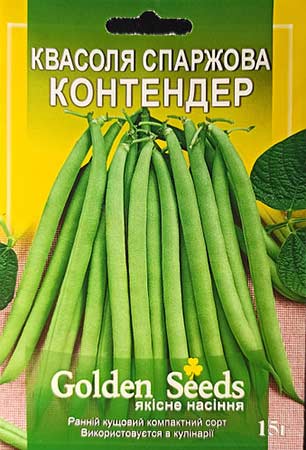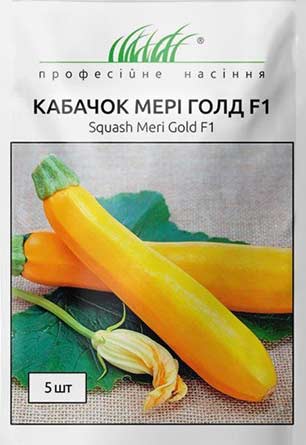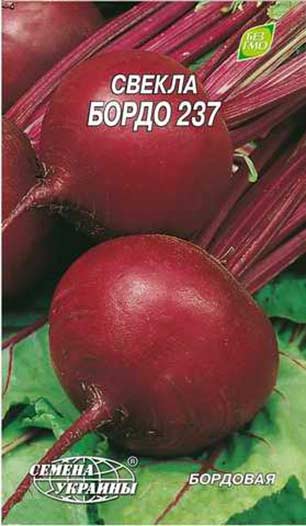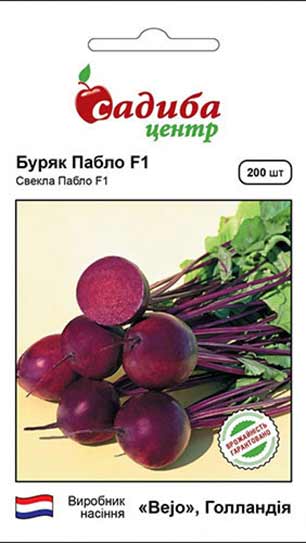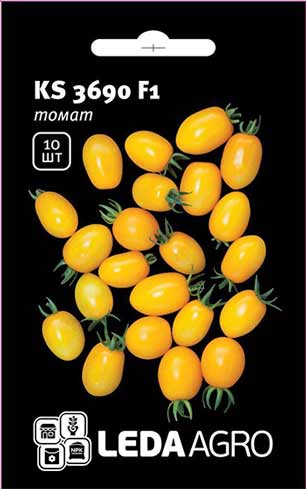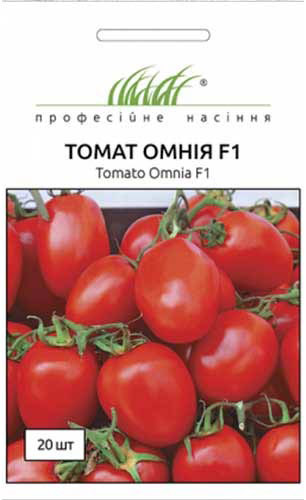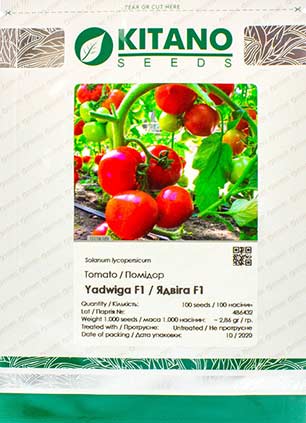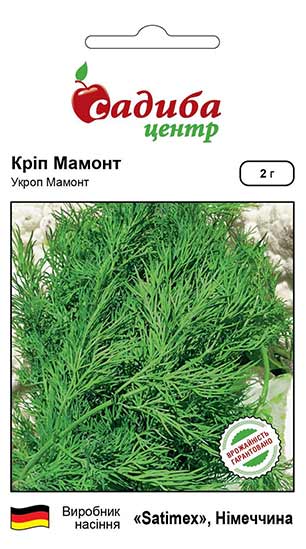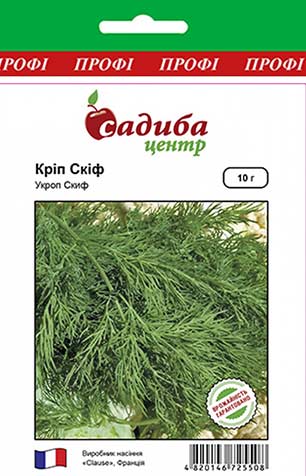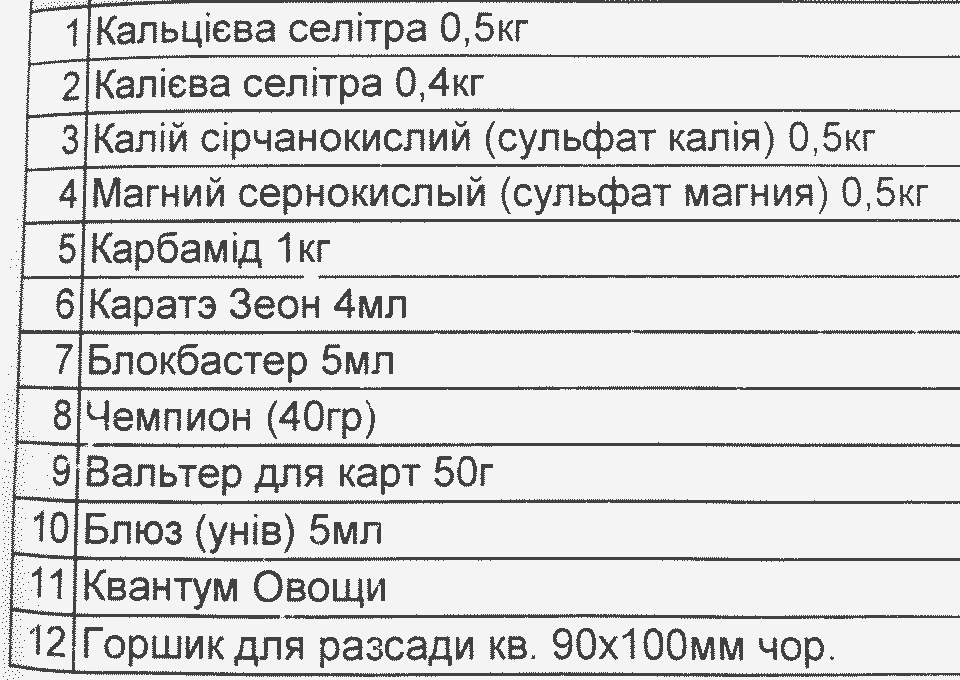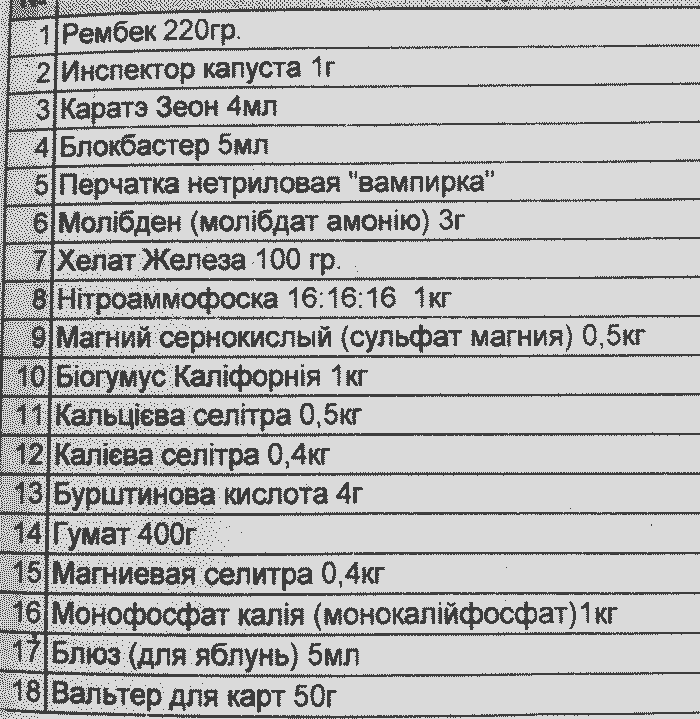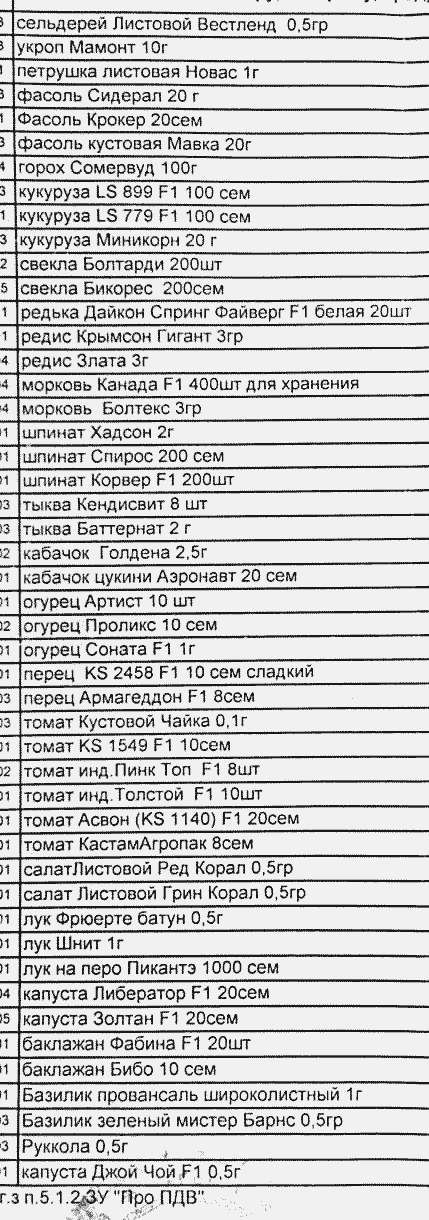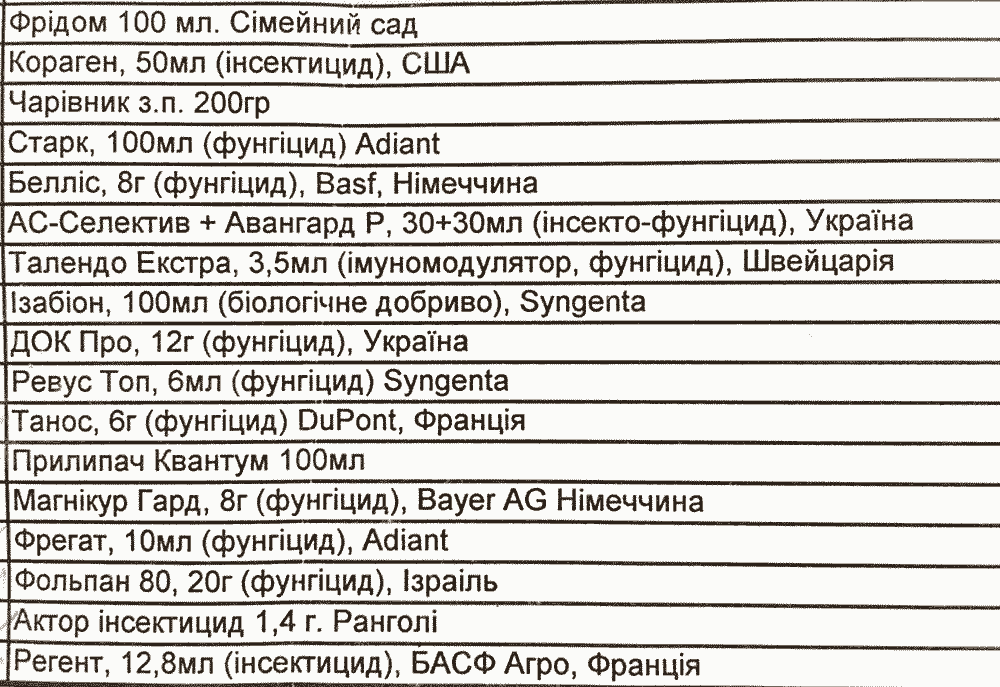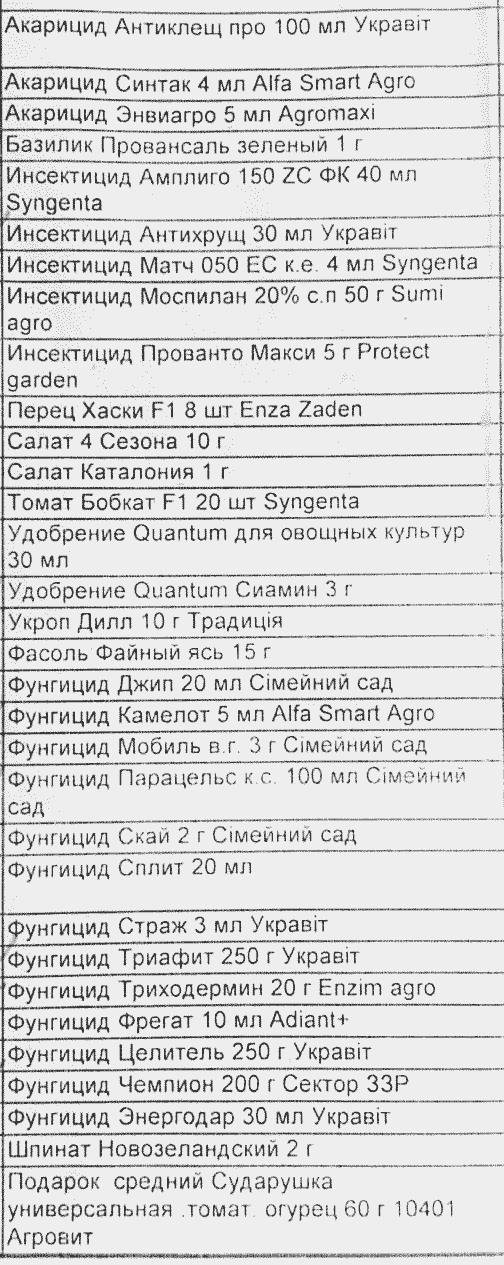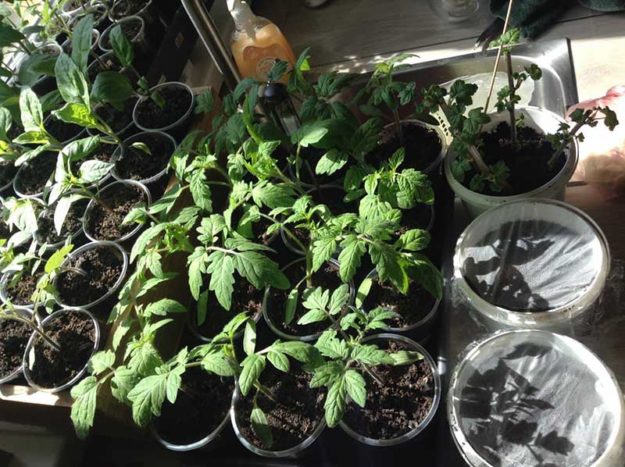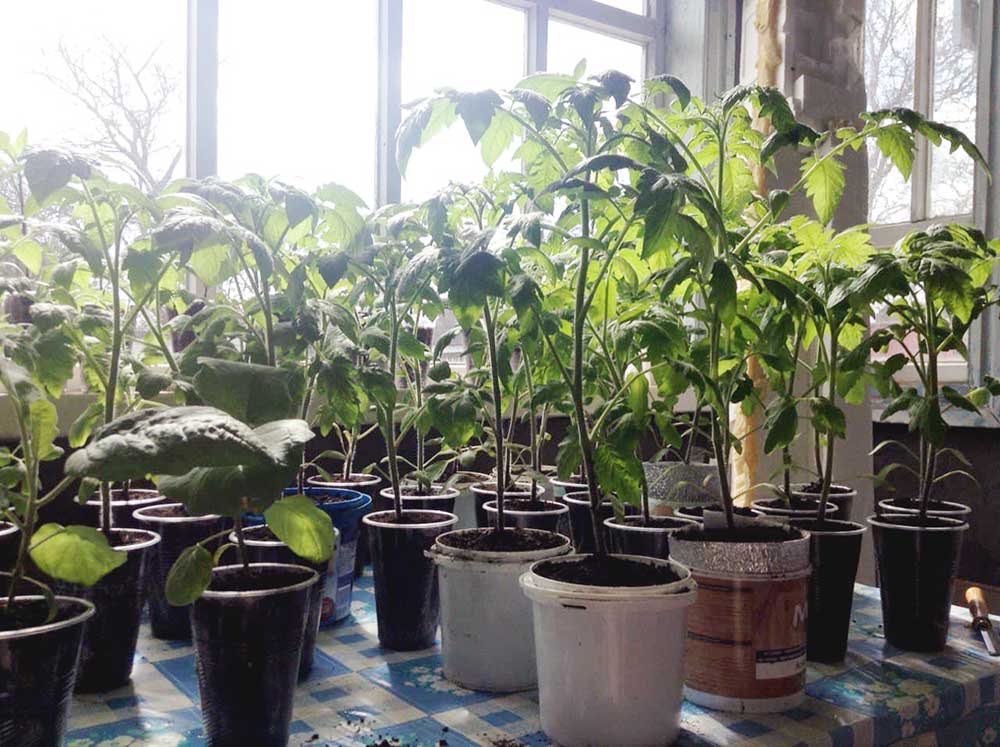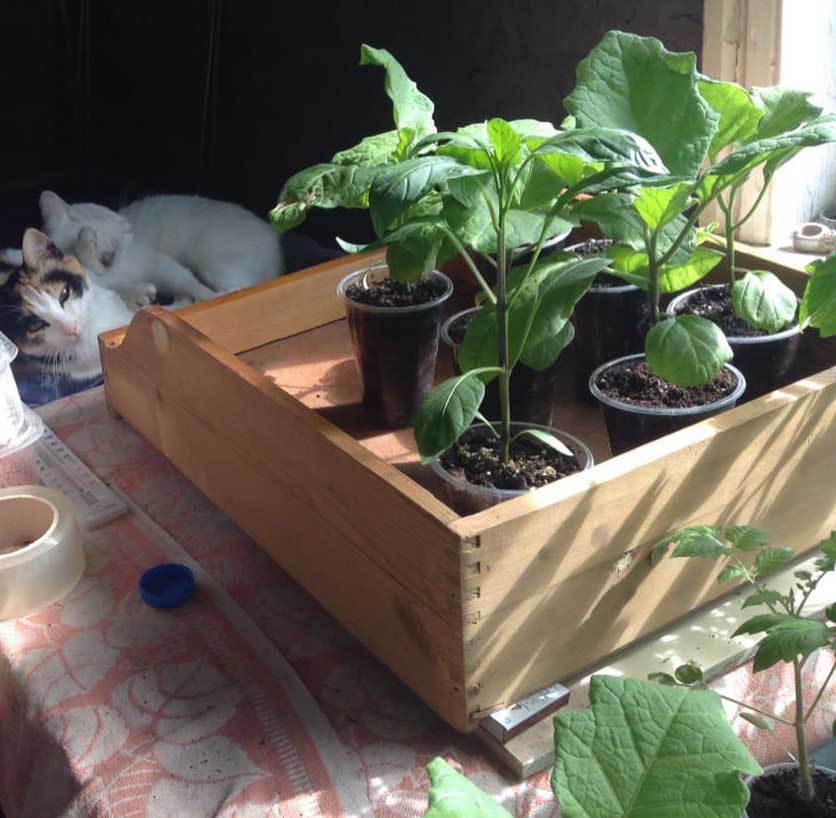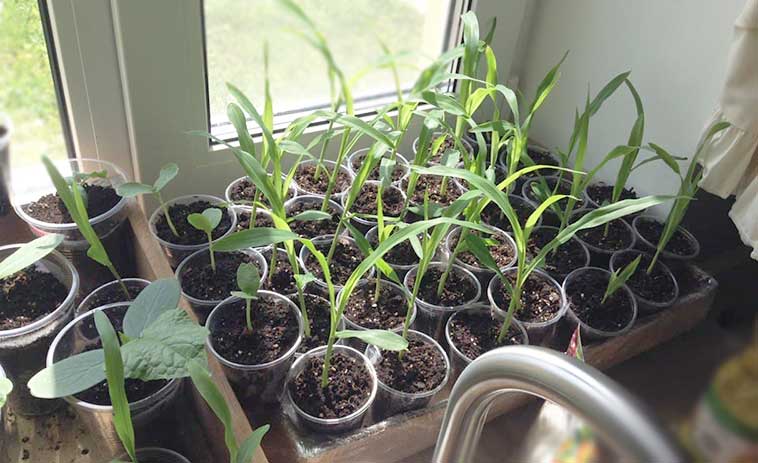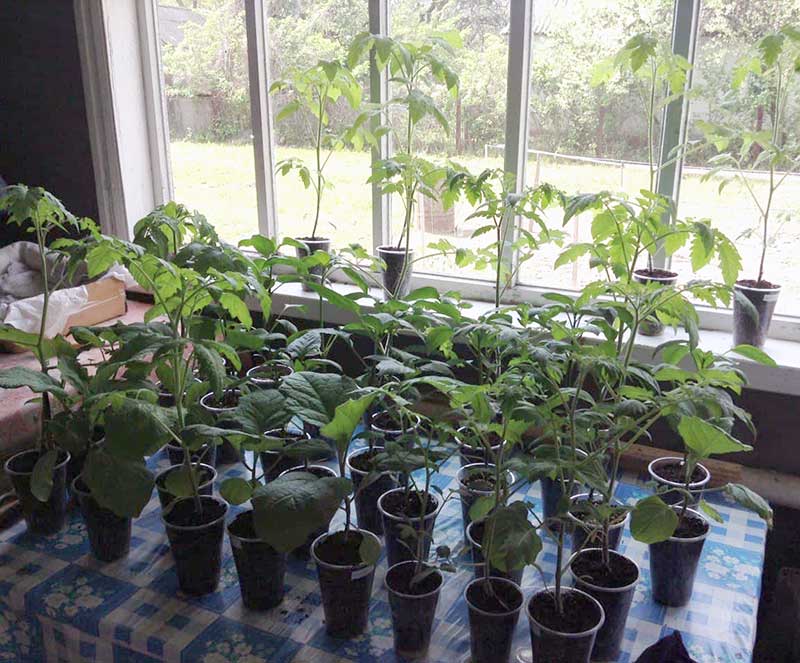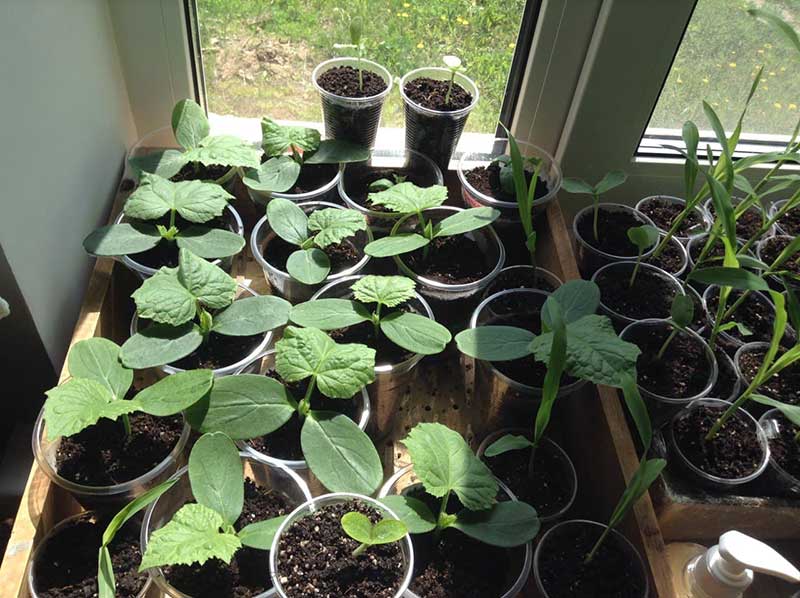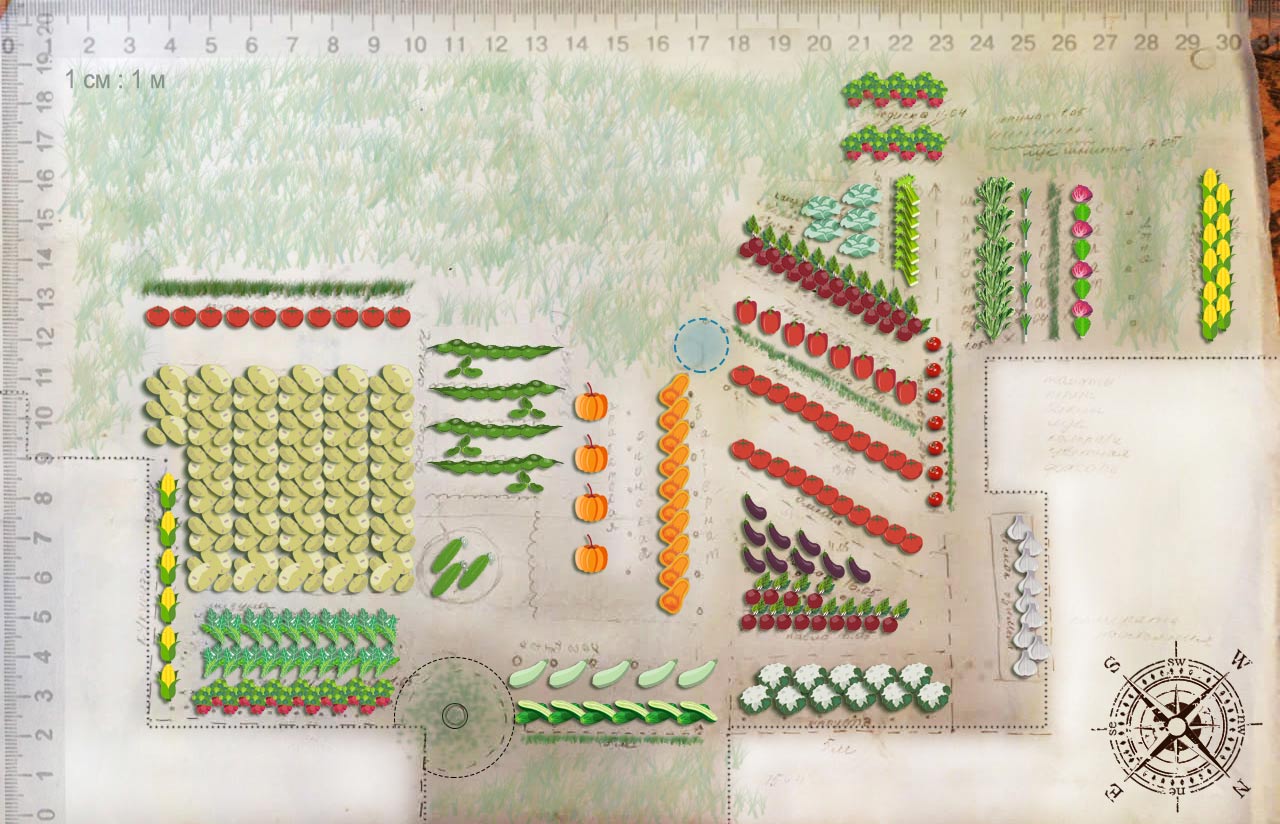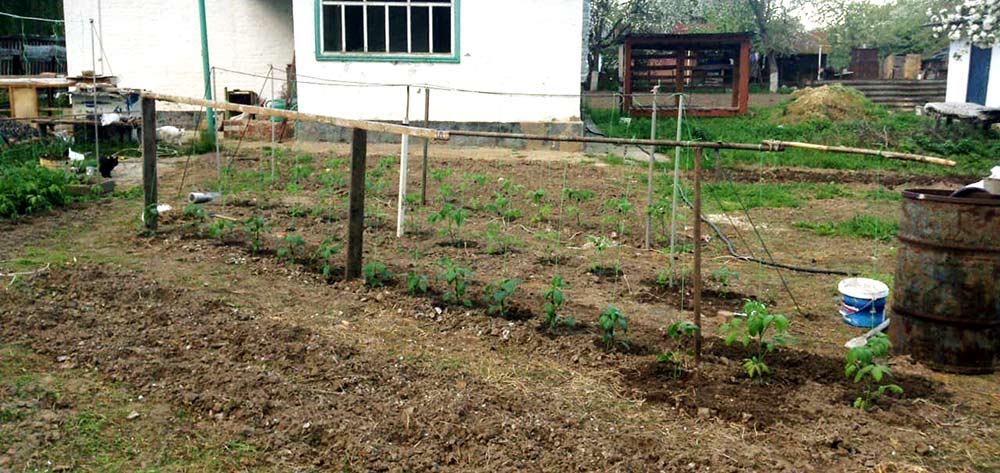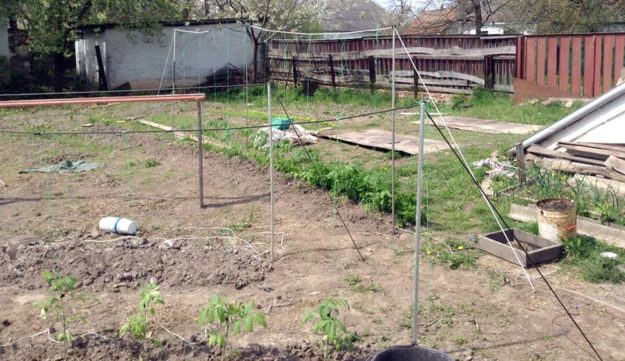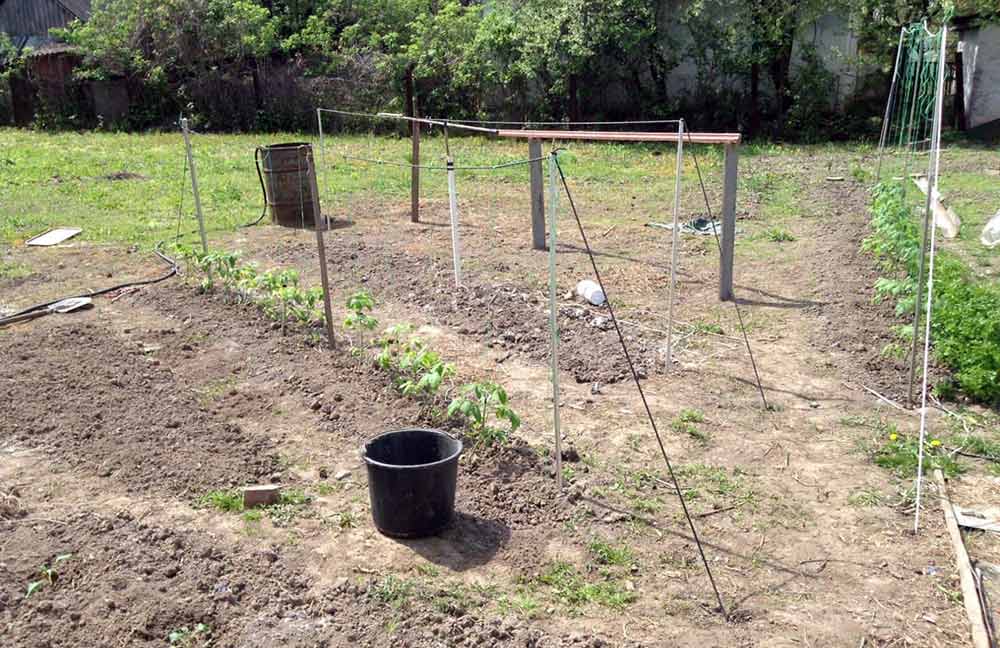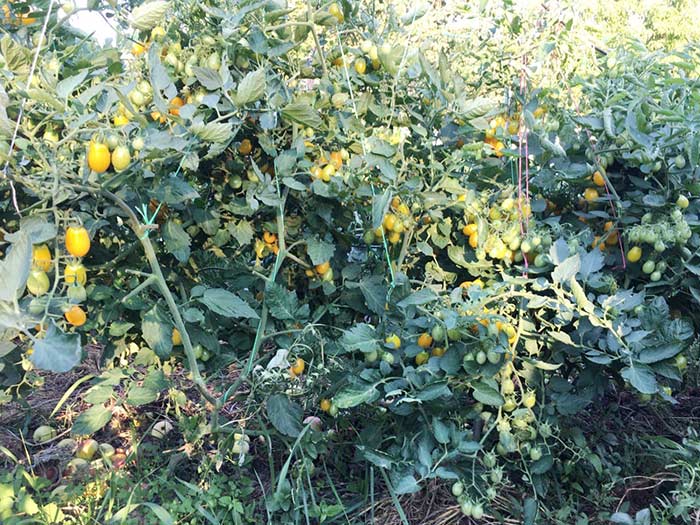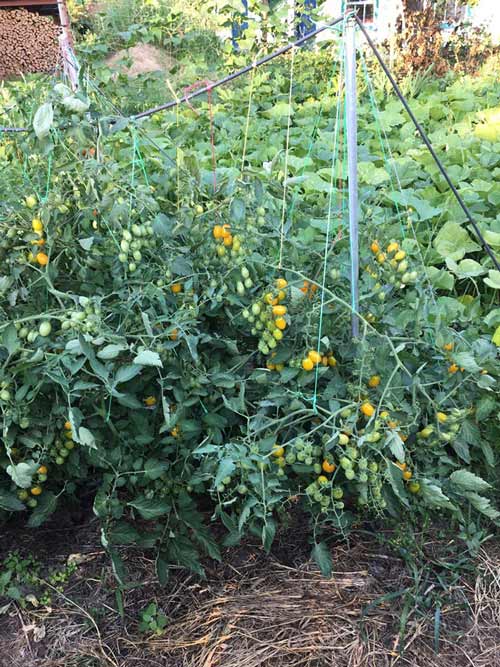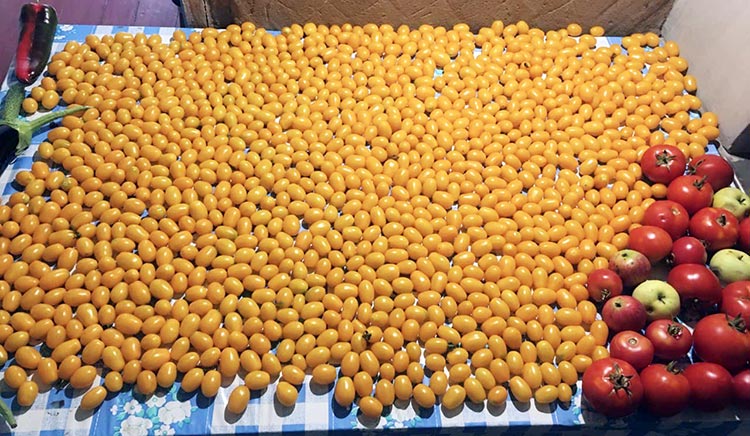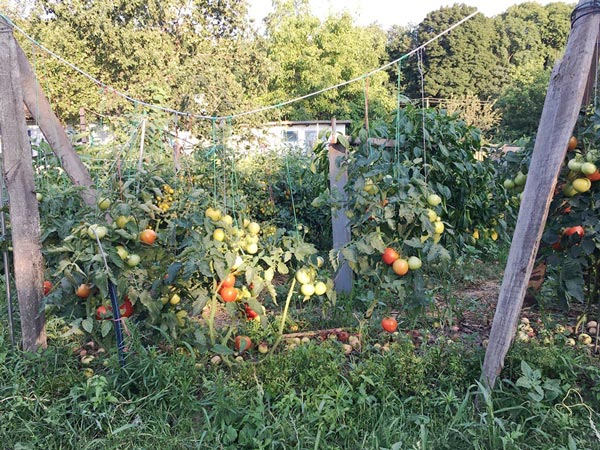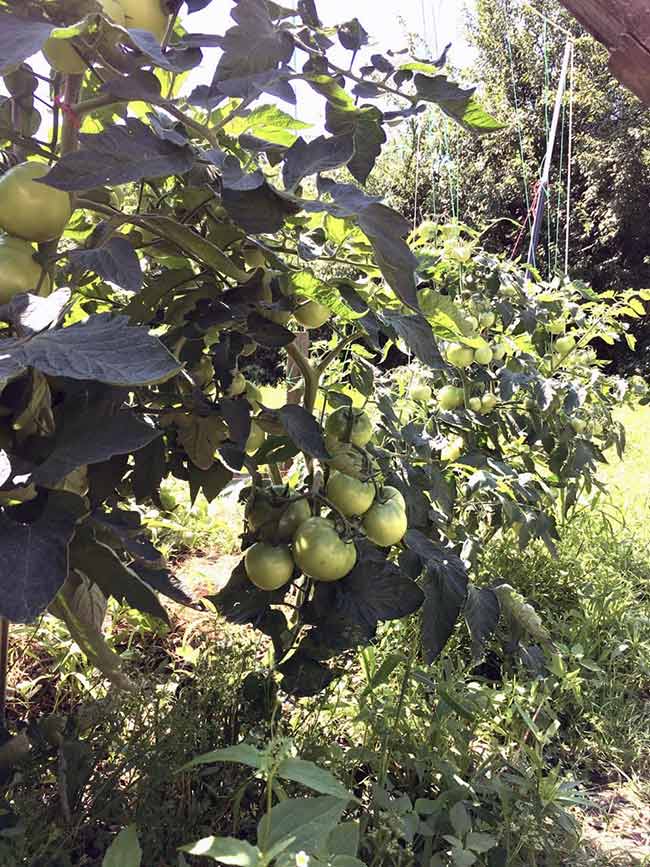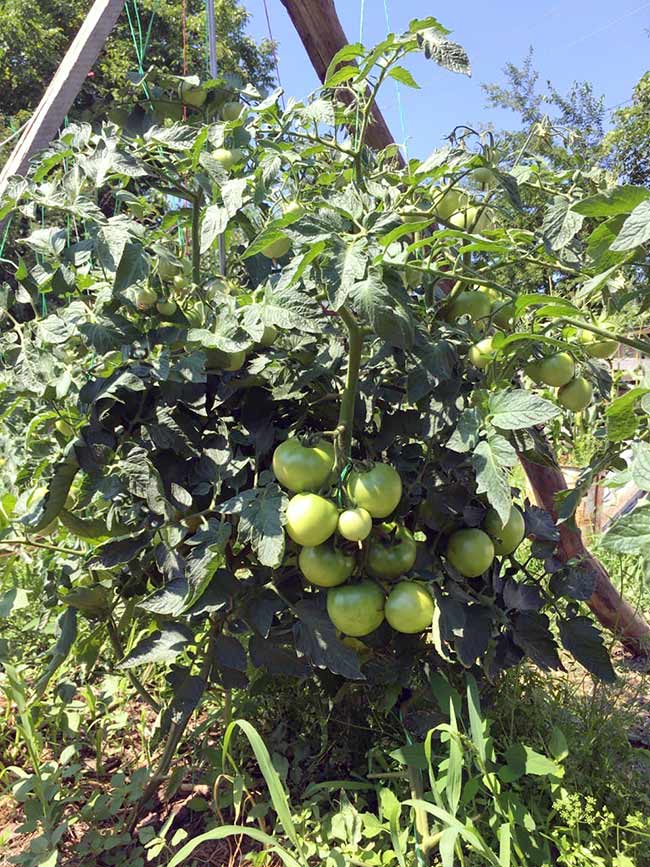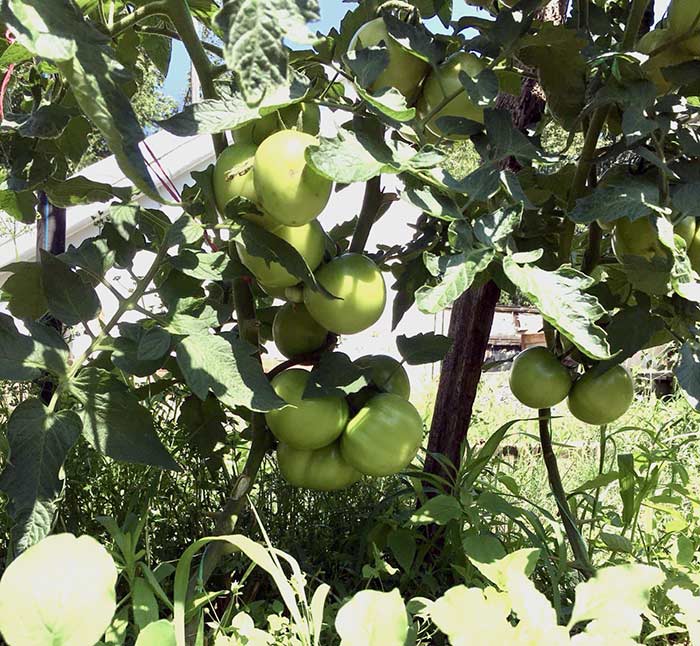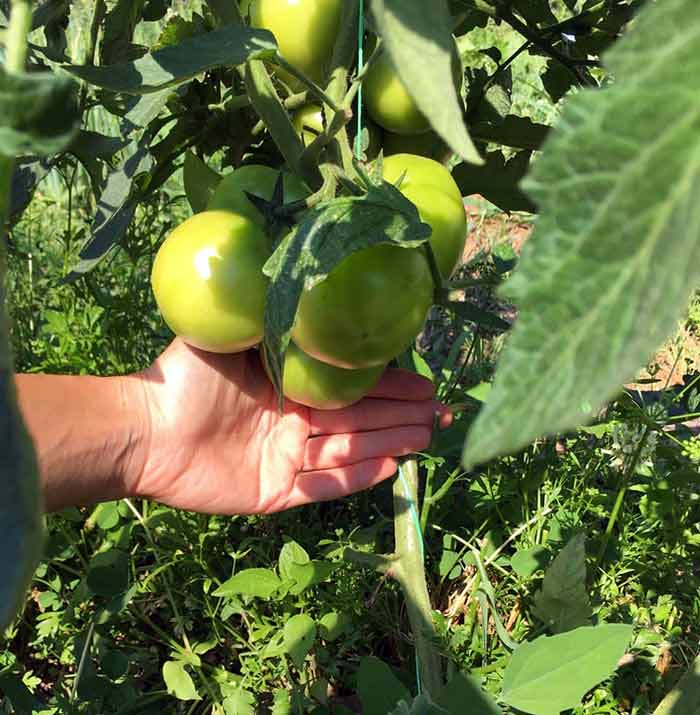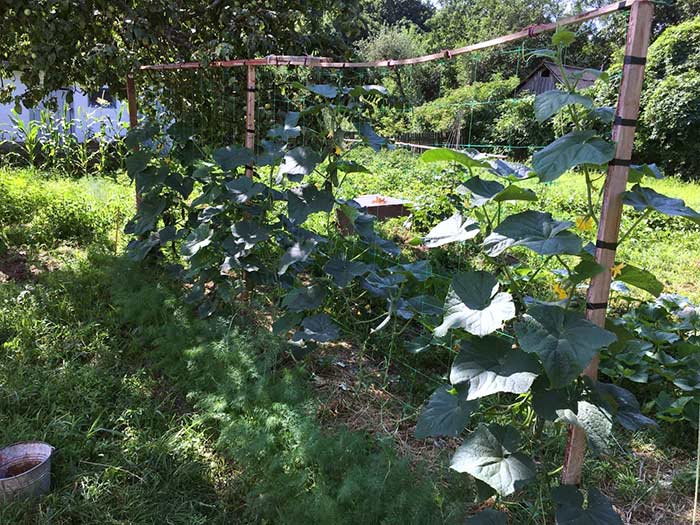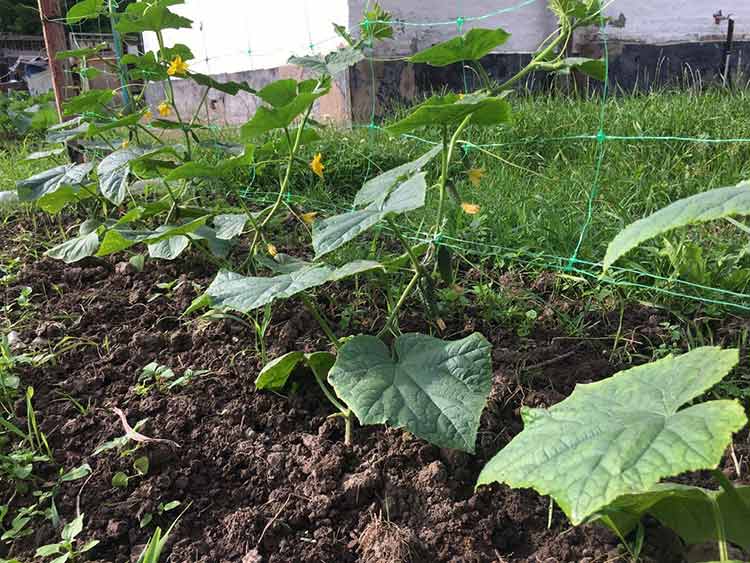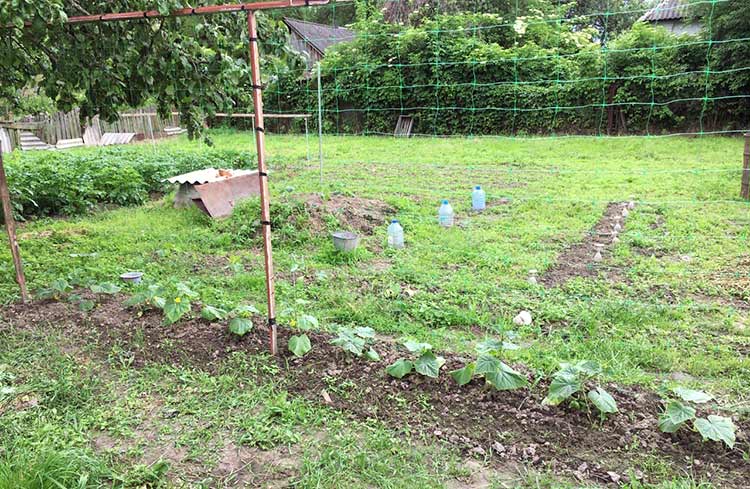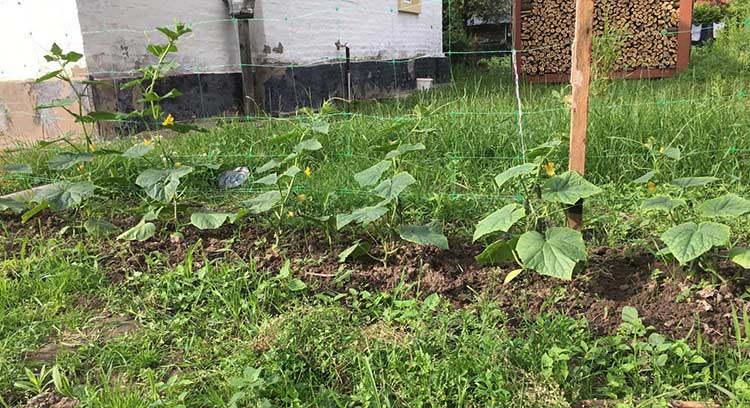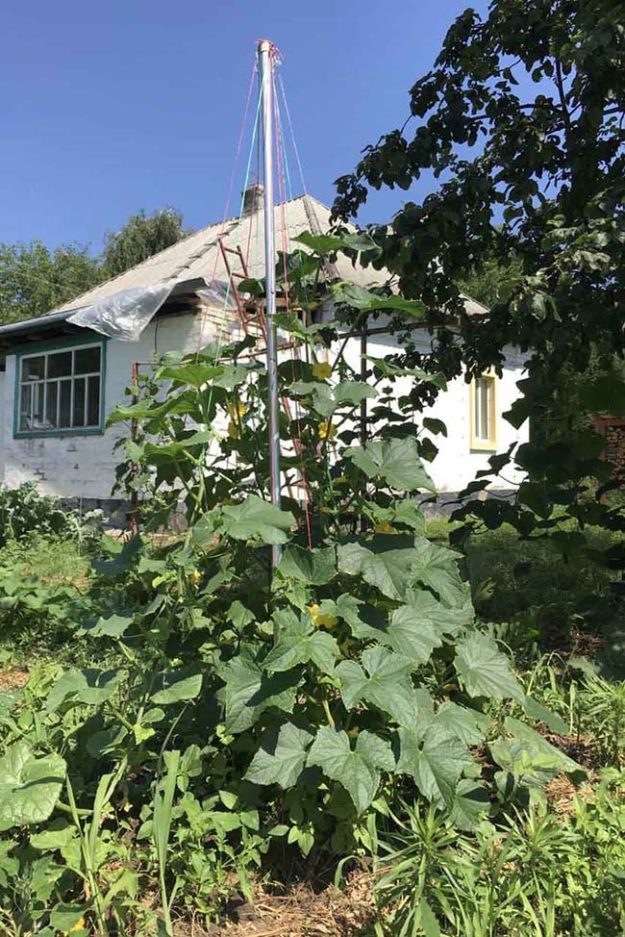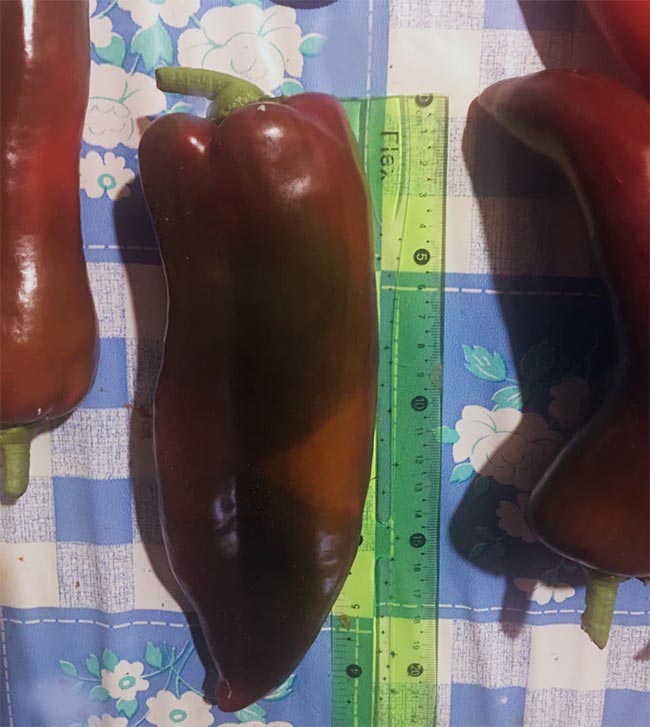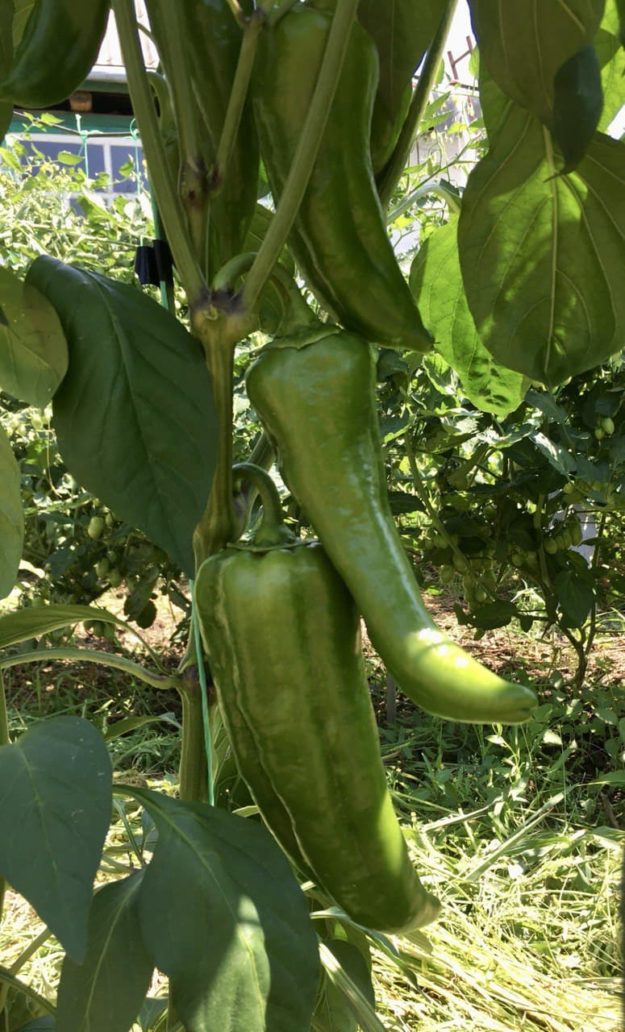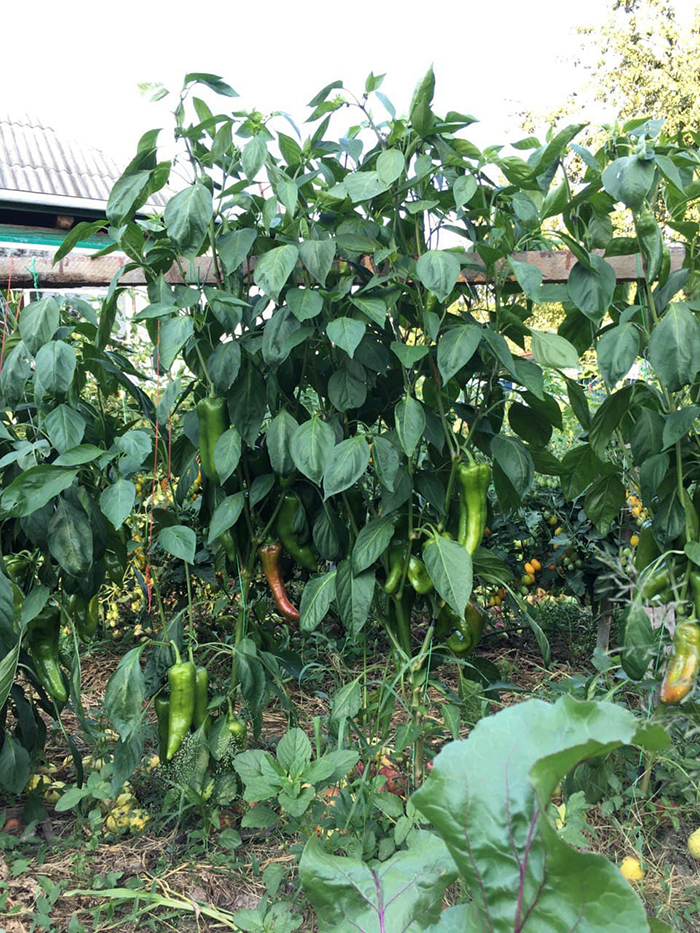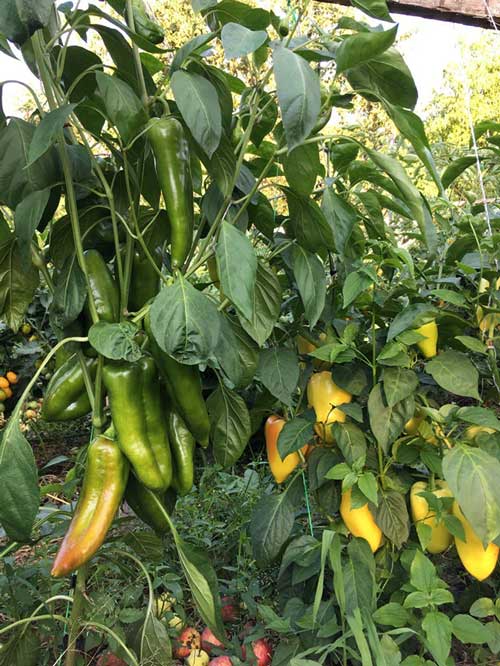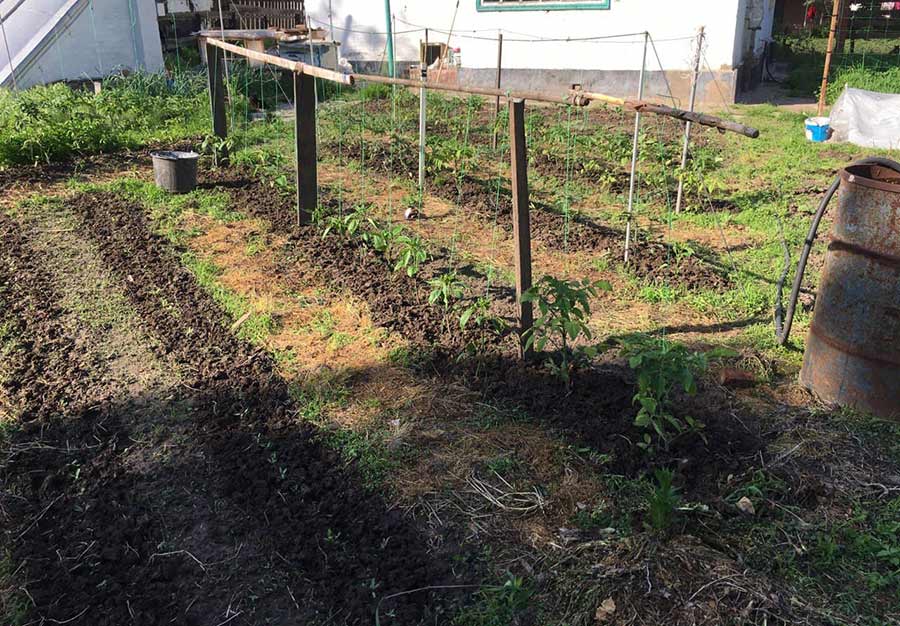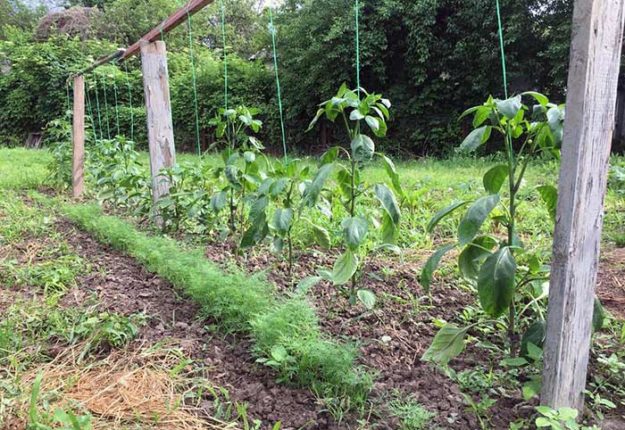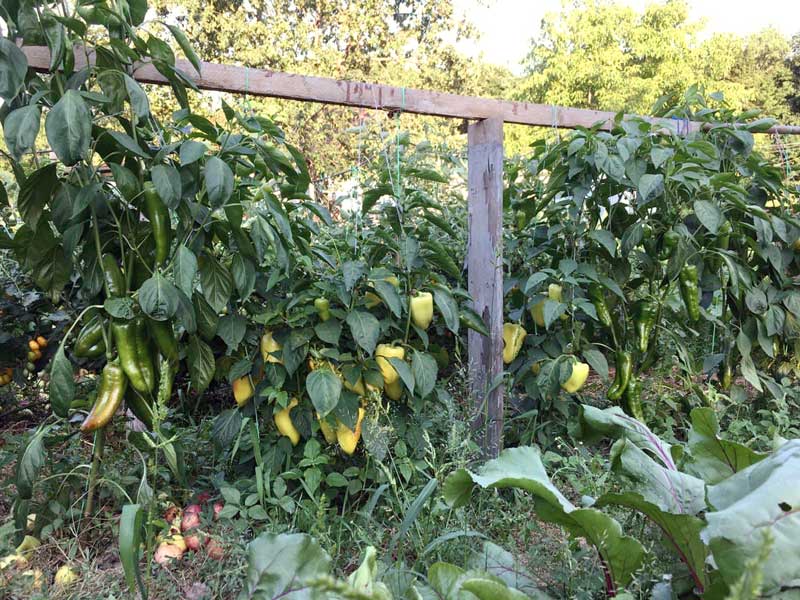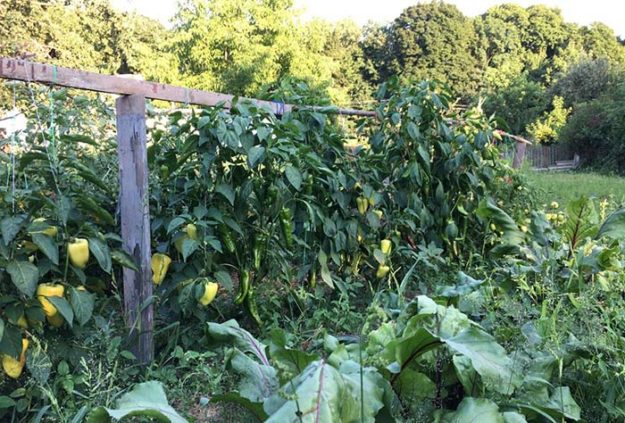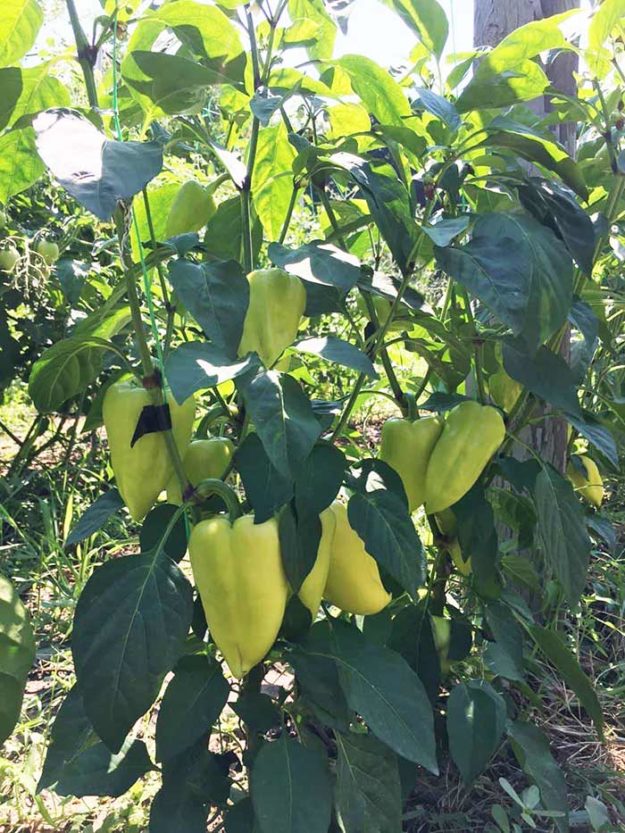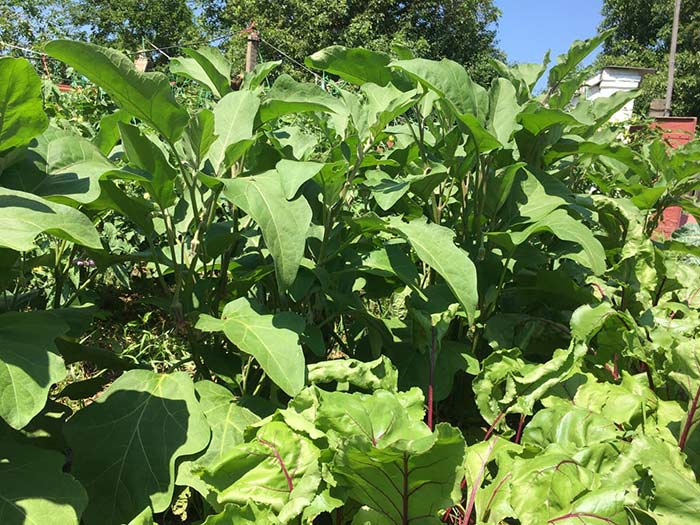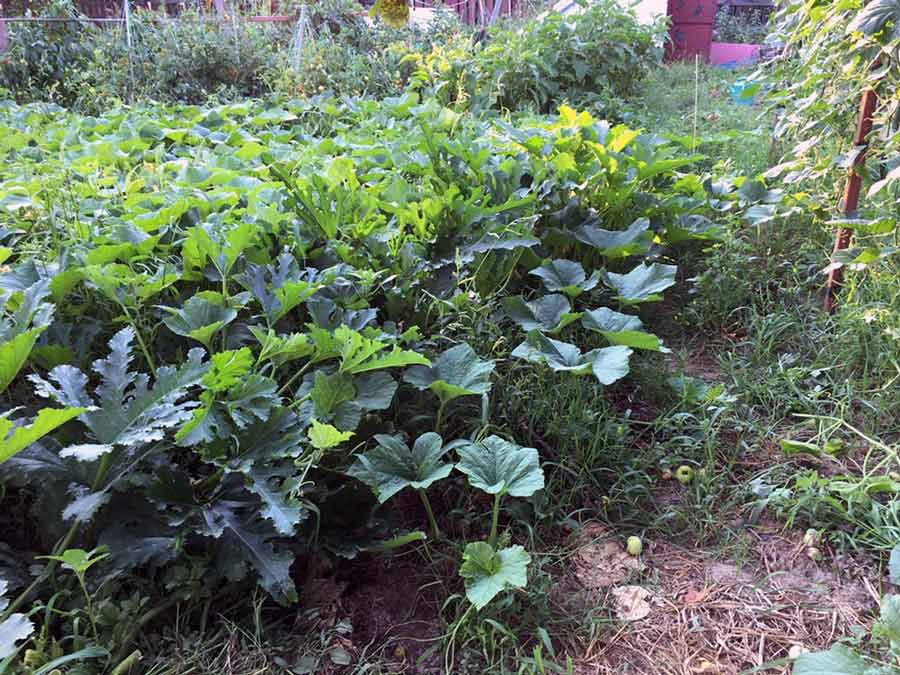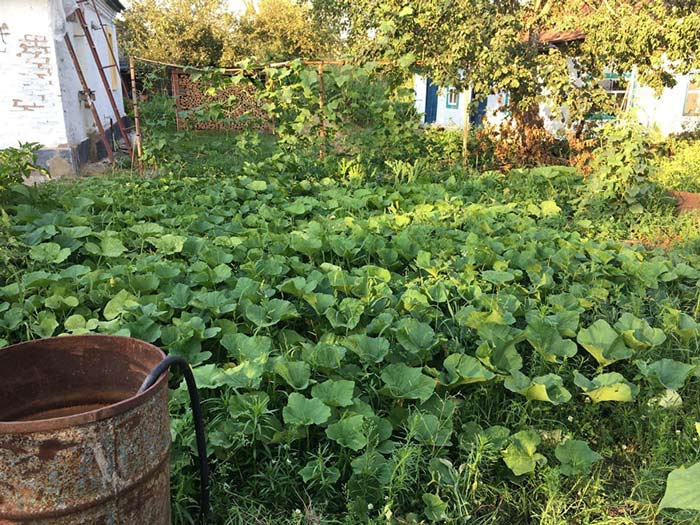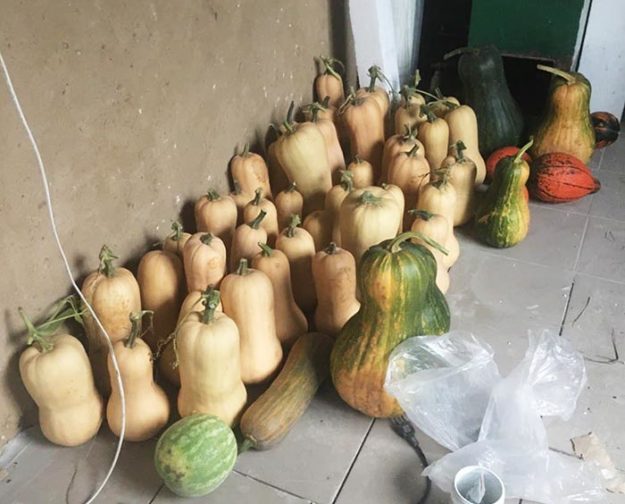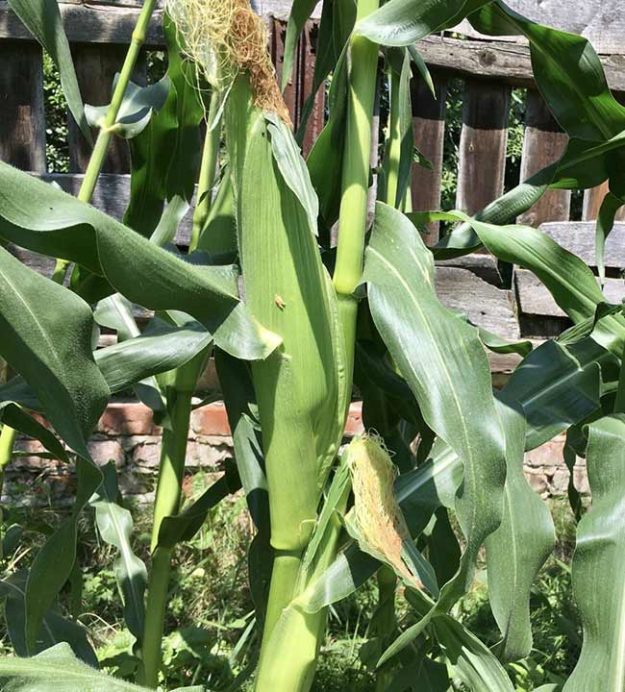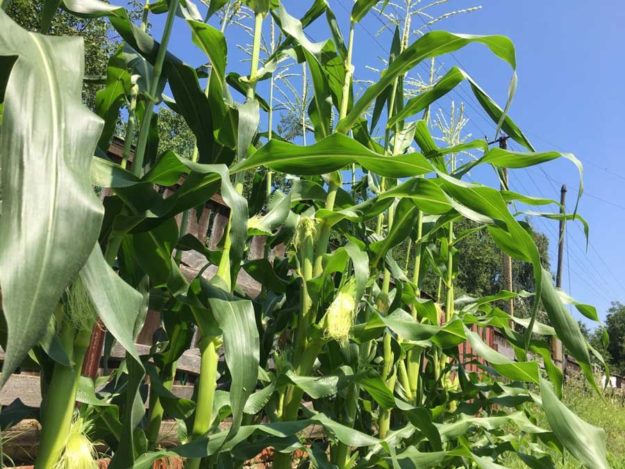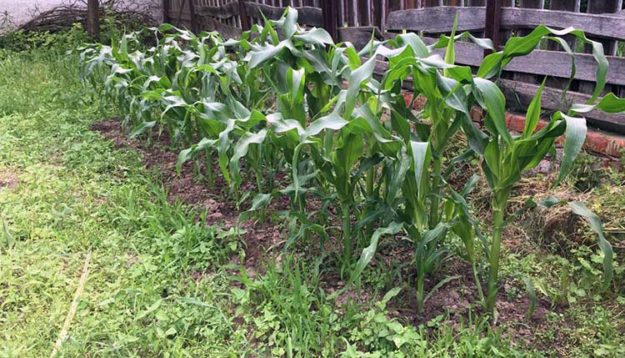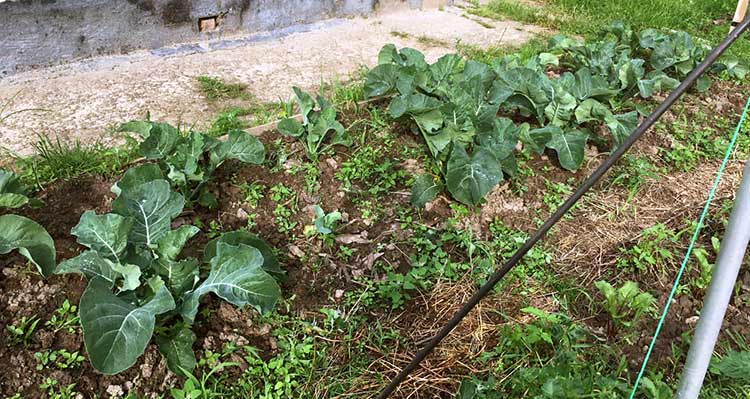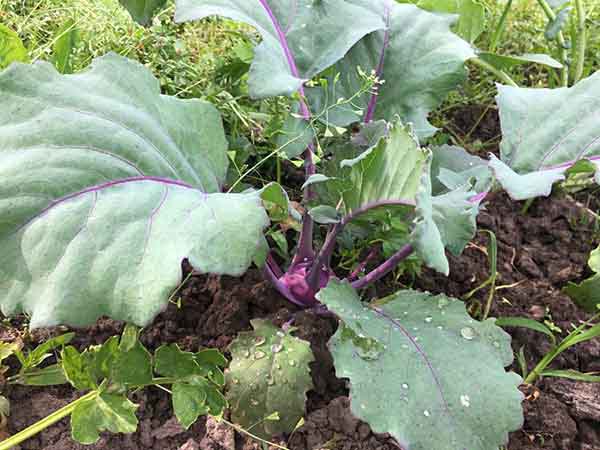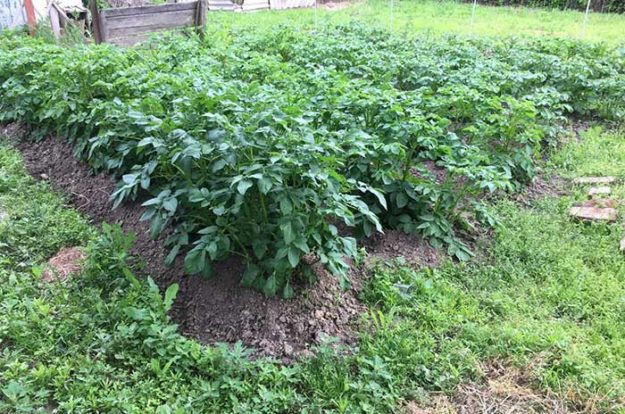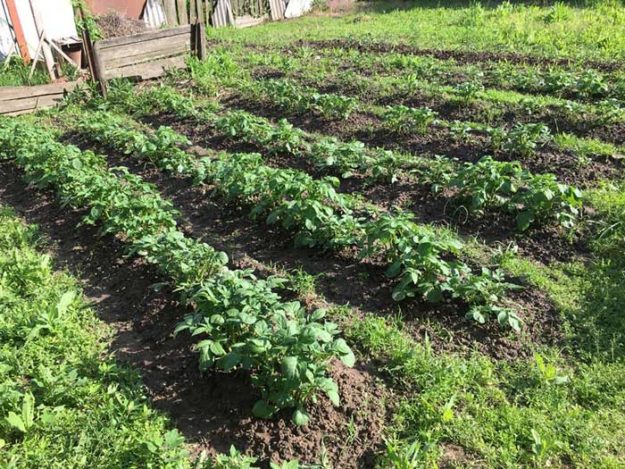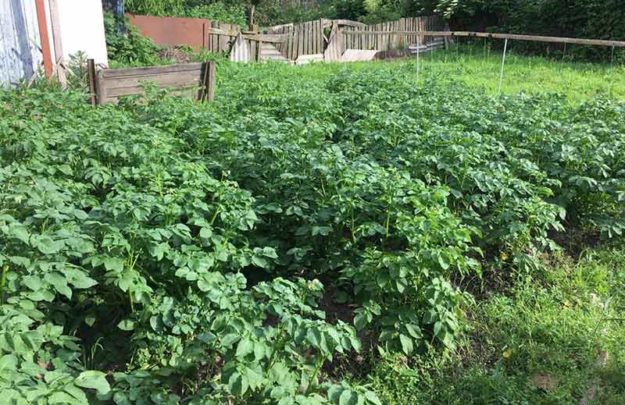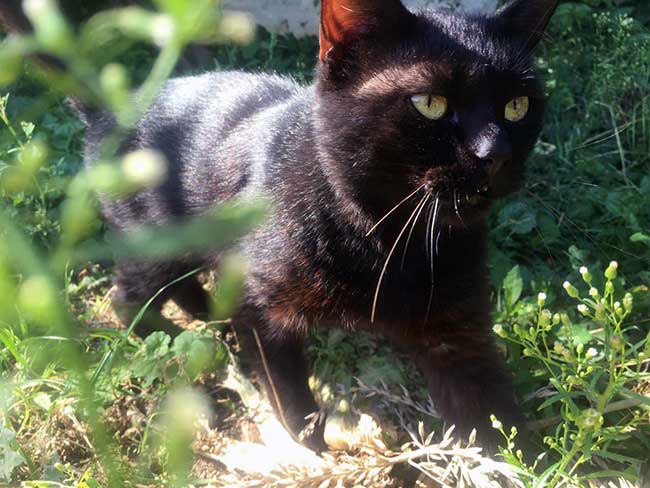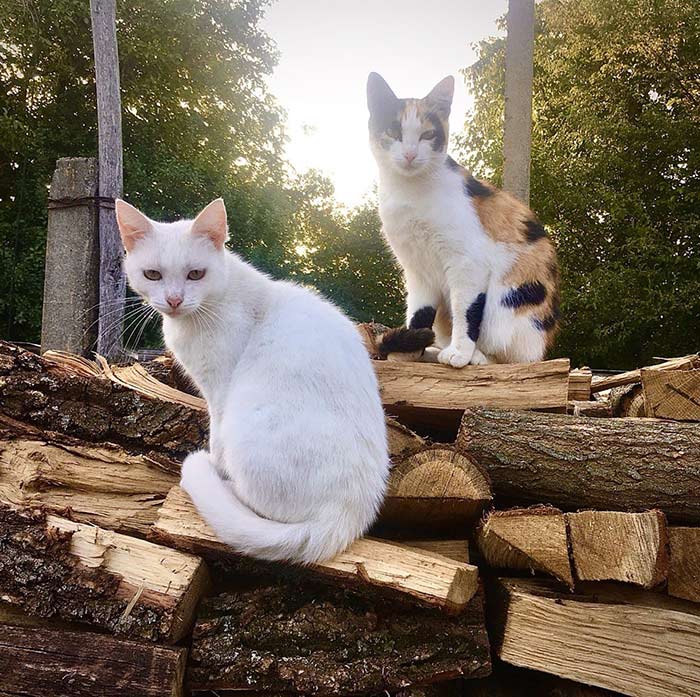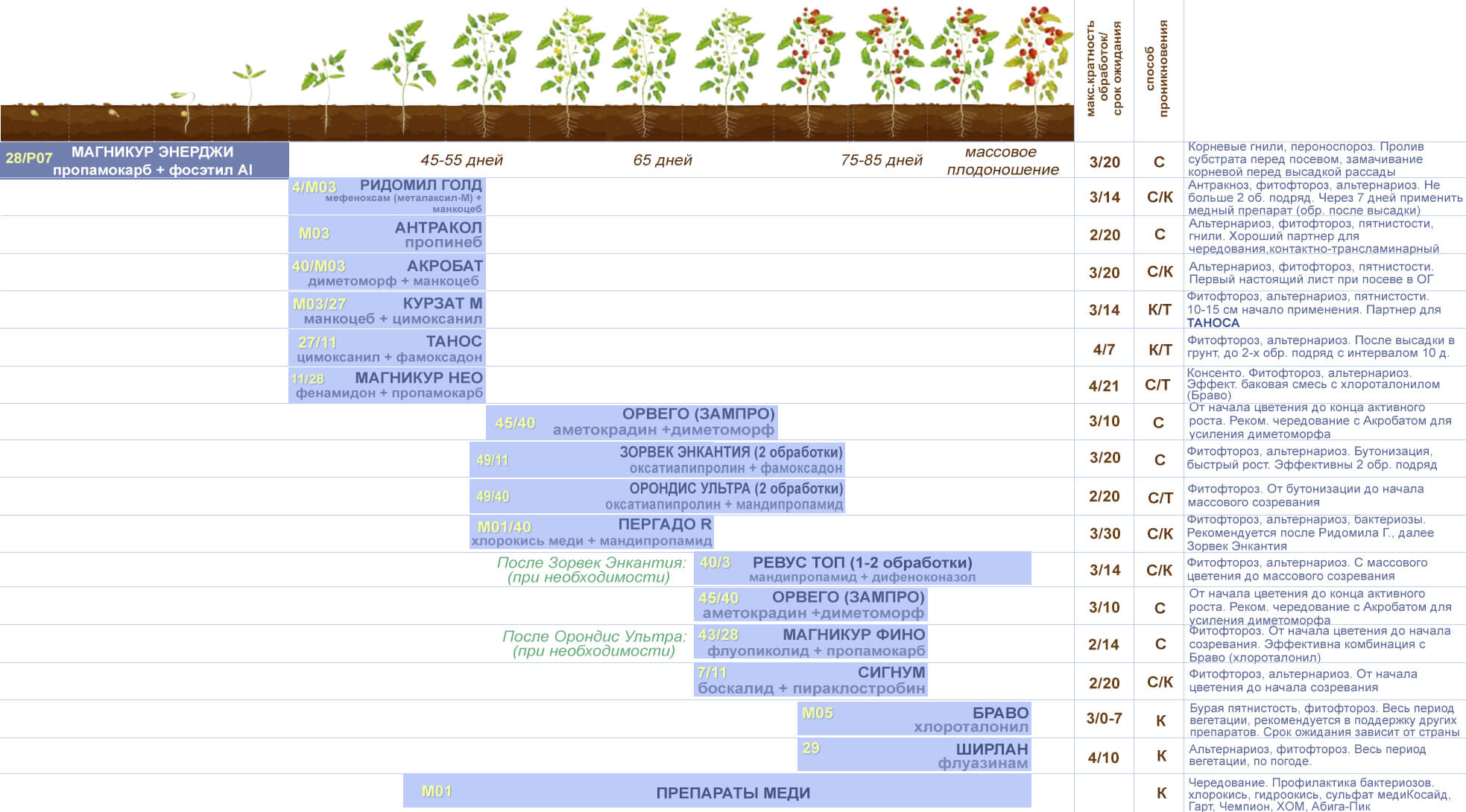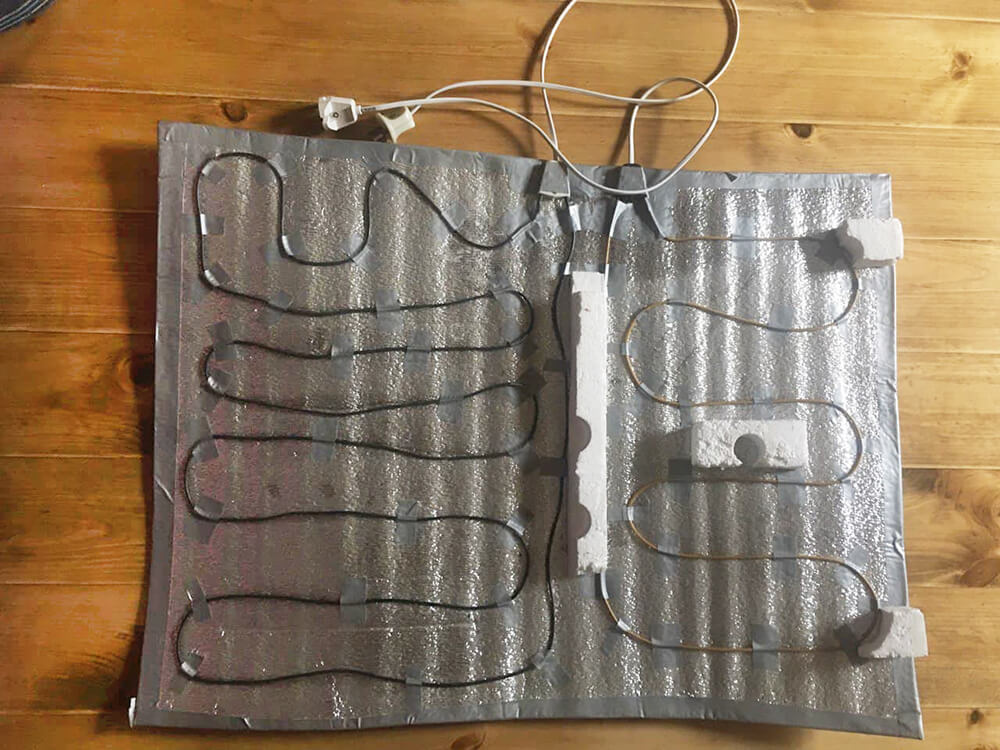The second season of fieldwork is over, jars are sealed, and greens are frozen. I’ve finally taken the time to summarize the results and start planning for the third gardening season. Despite the weather anomalies and the current lack of mechanization, I am very pleased with the results of my labor. Below is a brief report on the crops and some information about agritech.
I remind you, I am not a staunch advocate of organic farming and use all the benefits of civilization, such as inorganic fertilizers, fungicides, and pesticides.
There are not many photo reports, as I can’t force myself to grab my phone for every occasion. Here’s a report on my gardening debut for 2020 .
Seeds, Fertilizers, and Protection Means
This season I decided to be a bit more modest and reduced the number of packets by almost half. I gave up some leafy crops, such as chard and chicory salad, took fewer varieties of string beans and zucchini, and dropped patissons. I tried to grow beets and more potatoes, indigenous tomato varieties (unfortunately, hybrids are better in everything except taste).
Seeds for 2021.
I will write separately about protection measures and fertilizations with my schemes and findings. This season, I only struggled with whiteflies - none of the products provided satisfactory results. There is hope for Teppeki, but I did not take it for 2022; I simply won’t grow cauliflower for one season. I’m attaching photos of invoices with the shopping list for 2021 and for 2022; I ordered everything I needed back in September with good discounts. There are many grape preparations on the lists, the scheme for which I will post later - I developed it to help my parents. I myself am still without grapes.
Seedling Period
For the seedling soil, I used a mix of purchased peat mixture, coconut, perlite, and biohumus. The proportions are approximate: for 10 liters of peat, 300 grams of coconut briquette, 1 kilogram of biohumus, and 2 cups of perlite. There were no problems with the seedlings, except for edema (wateriness) in the peppers and eggplants due to my negligence. All the affected plants recovered and yielded a stunning harvest.
Tomatoes on April 9
Eggplants on April 9
Tomatoes on May 3
Eggplants on May 3
Corn on May 14
Tomatoes on May 14
Cucumber seedlings on May 14
A small photo report on the seedlings for 2021.
I grew tomatoes, cucumbers, peppers, eggplants, corn, cauliflower, zucchini, and some pumpkins from seedlings. All seedlings were on bottom heating and with backlighting. I will reveal the details in a separate material later. Fertilizations during the seedling period were regular, following the recommendations of leading seed breeding companies.
Planting Scheme and Bed Arrangement
My plot has a useful area of about 4 hundredths, but due to neighboring buildings and trees, a significant part is shaded after 3 PM, and in the morning, my summer kitchen and a huge apple tree cast shade from the east, which will have to be eliminated (and I still haven’t planted a single tree!). Nevertheless, we have enough space in well-lit areas. Below in the diagram, I tried to reflect the layout of the beds according to the cardinal points. I photographed my plan on tracing paper and added elements to it in a graphic editor. This is a top view in scale, quite close to reality.
This year, I replaced stationary beds with trellises made from improvised materials. I struggled; the heavy tomatoes knocked over all my supports, and one of the beds with aluminum tubes collapsed under the pressure of the hurricane. In the next season, I plan to use profiled pipe supports.
I tied up the tomatoes and peppers using the method of wrapping twine around the stem, also tying up the suckers additionally. I attached the twine to a huge rusty nail or a staple made of thick wire, which I drove into the hole at an angle before planting the seedlings. I placed the plant in the hole and made 2-3 revolutions around the stem. Then, I tied the twine to a cable stretched over the supports. For the peppers, I used an old pine baseboard instead of a cable. It’s a pity that I didn’t have enough wood for the tomatoes—under their weight everything sagged, which is hard to believe looking at the little shoots in the photo above. The tomato variety Yadviga bent the aluminum pipes (old 1.5 m curtain rods).
While planning the beds, I studied the compatibility of plants. For the most part, all these compatibility charts are pseudoscientific nonsense. I organized my findings on this topic into a separate article .
Now, I will go through the crops separately.
Tomatoes
I sowed the tomatoes for seedlings on March 10, and they all outgrew. Two weeks before planting, I had to transfer them into liter buckets, causing a huge expenditure of good soil, moving these plants back and forth twice a day, and constant attempts from the cats to nibble the seedlings. The conclusion: sow no earlier than the third decade of March, and it’s better to wait until the first days of April for open ground.
I planted three hybrids: Omnia plum, Kitano’s cherry ks 3690, and semi-determinate Yadviga. In total, there were about 35 bushes, with a few losses due to two hurricanes and hail. There were a lot of fruits. With such a harvest, half of what I planted would have been enough for a family of two. We had to process all of this almost daily, we stuffed ourselves with tomatoes and generously shared them. Thanks to timely treatments, there were no losses from diseases, except for Omnia which caught alternaria, affecting its storage capacity, but did not impact the overall yield.
The magnificent yellow cherry cluster type ks 3690 showered us with sweet tomatoes until October, fighting late blight until the end. It wore me out with frequent pruning—without sanitary pruning, these are real tomato shrubs, flowering, producing fruit clusters and suckers endlessly. An indestructible tasty cherry for open ground with phenomenal storability. One of the few hybrids that can gain flavor after being picked from the branch. I will repeat it in 2022 with a slightly improved version—indeterminate ks 1549.
Omnia I will repeat, but I won’t do it again. It’s a good technical tomato, but I can find a tastier hybrid plum. I will replace it with Tolstoy, Aswon, and Kasta.
Yadviga from Kitano is a beautiful, productive tomato with a mediocre flavor. I led it with three stems. Perhaps it was due to underfeeding and harsh weather conditions: there was not enough sun, and too much precipitation. After all, Yadviga was created for film greenhouses and intensive feeding, and I cannot regulate the leaching of nutrients in open ground during monsoon rains that poured over us this summer. The fruits cracked from excess water towards the end of the season. Loaded bushes fell over metal supports a few times. I didn’t weigh the harvest, but you can get a rough idea from the photos. The lack of flavor spoiled the impression, so I do not see any sense in repeating it in the near future. I will try Bobcat as a tasty and productive variety.
Local, indigenous pink indeterminate and determinate varieties were tasty but prone to diseases despite treatments and not very productive. The seedlings were gifted to me, with exposed roots, and they were a bit weak. I decided to give a chance to a determinate variety with small pink fruits and collected seeds. I will try again. I will add Chaika to the indigenous ones—a popular low-growing variety that is grown here by direct sowing.
I am not sure if I can manage to grow fewer than 30 plants since I want to try everything, and preferably in one season))).
Cucumbers
I am satisfied with the cucumbers, although there was some hassle involved. Previous experience showed that seedlings are mandatory—I am neither financially nor emotionally ready to reseed 3-4 times. Good seeds are not available in the middle of the season for these endless reseedings, so only seedlings. We were provided with a harvest from only 10 out of 15 planted bushes, so I will stop at 15 plants.
The sowing for seedlings was on April 27, and at the time of planting, there were 5 true leaves, slightly overgrown. I planted them in a cover made of 30g spunbond with plastic wrap on top from heavy precipitation. During the day, I tried to remove the plastic for ventilation. I managed to avoid root rot, and there were almost no aphids (treatments with insecticides and acaricides were done as scheduled). Shakti and Nibori Cucumbers I couldn’t differentiate during the growing process. When I transplanted them from cups, I didn’t mark the bushes. Therefore, I recommend trying both hybrids - they are great fresh, for pickling, but I haven’t tried them for salting. They were moderately sick, despite treatments, with downy mildew, but the infection background in the area is very high, and no one processes their plants. Sanitary pruning of leaves helps a lot with false powdery mildew, and with moderate treatments according to schedule, cucumbers yielded for at least 5 months. I managed them in 4-5 stems, with at least 2 cucumbers in each node, they didn’t overgrow and had no empty spaces. Fertilizations were regular, and I used compost in the trench.
Regal bee-pollinated from Kloze was disappointing, as I had high hopes for it. Neither the yield nor the taste impressed me. It grew slowly, produced a lot of empty flowers, and very few fruits. It got sick very late, but this did not affect the number of cucumbers. Fertilizations were done according to the schedule, and all the other cucumbers responded excellently to care, except for Regal. I planted three bushes on a hill of black soil left after digging the septic tank, and I won’t do it that way again - caring for, processing, harvesting, and managing side shoots is difficult. Although it looks cute as a little tent. Still, cucumbers on a net are the most optimal solution.
Cucumbers “little tent” on a support
Peppers and Eggplants
Turkish pepper from Yuxsel Armageddon even in the open ground of northern Ukraine produced an amazing harvest. The bushes had unlimited growth potential, blooming until the sanitary cleaning of the garden. The flowers did not drop under any circumstances. One plant produced 12 to 18 fully ripe fruits. If only the weather had allowed… I will repeat Armageddon in 2022.
Peppers are at least 20 cm long, weighing about 250-300 g
Short internodes, with a flower in each node
Sowing was without soaking, on February 27. The little sprouts appeared on March 11, all 8 came up and survived until transplanting into the ground. Treatments followed preventive schemes, the plants did not get sick and showed no deficiencies. The taste is 8 out of 10, much more “peppery” than Beloserka. But to reveal the aroma, one needs to wait for biological ripeness; it stored well and matured nicely at home until December.
August 4
Armageddon and Yanika peppers
Densely sown dill
Compare the growth of Armageddon and Yanika on August 4
The Yanika pepper is decent, with thick walls, early. It turns red reluctantly and stores much worse than the Turkish pepper. As an alternative to Beloserka, it’s quite acceptable. I found the taste and aroma lacking, but one must understand that there isn’t much sun in my latitudes for the solanaceous crops to develop properly, so I do not complain. I won’t repeat it for now.
Pepper from Moravosid Ingrid did not germinate at all; I have no luck with these Czech seeds, so I won’t buy them again. Marconi Red had only two out of eight seeds germinate, and the two low bushes produced 5 pale peppers. I suspect a mix-up. The seeds were “2 kopecks a kilometer,” and I didn’t expect much from them; thus, my main bet was on Kitano and Yuxsel.
Gordita Eggplants, from last year’s leftovers. Tasty, productive, tall. They struggled through weather cataclysms, and I was tempted to pull them out. On top of that, I also burned them with a leaf fertilizer - the high concentration acted like a herbicide, curling the leaves as if from a virus. Nevertheless, the side shoots compensated for everything. Each bush managed to set from 5 to 7 fruits, but then the Colorado potato beetle and fusarium struck. I don’t know how to fight this illness; fusarium often hits during the abundant fruiting stage, and I don’t want to pour any medicines at the roots. For now, I’ve come to terms with it, but there is still much work to do on the agronomy, as fusarium can be prevented.
Zucchini and Pumpkins
This year, we managed with 5 zucchini bushes - four Meri Gold and one last year’s from Kitano. Nothing special, tasty and productive, they don’t overgrow for a long time, and they don’t get sick. I won’t repeat it; I will try some varietals.
Pumpkin is my love, and it was love at first sight, and its name is Butternut (nut oil, butternut, etc.). Greed compelled me to grow 9 seedlings, additionally sowing 4 Japanese pumpkins Uchiki Kuri and several late Arabatskie. The seedlings of pumpkins got a bit sick, and the plants from direct sowing caught up. The super-productive butternuts yielded about 40 fruits, managing to ripen fully on the vine. The Arabatskaya produced 6 pumpkins, of which only two truly matched the variety. Uchiki Kuri produced a few portioned fruits with very thin flesh and also caught a virus. They are only cleaned with a knife, and their taste reveals itself in baking; when fried or boiled, they disintegrate quickly. I will continue to grow butternut; it is perfect for me.
Sweet Corn
I grew it for the first time. The hybrid Spirit from Syngenta was grown from seedlings (sown on April 27), while Aromatic was sown directly. Both varieties are tasty and sweet, but the Spirit ears were better pollinated and produced many side shoots that I decided not to keep. Despite my assistance in pollination, the ears were incomplete. Perhaps there simply weren’t enough plants for proper pollination. I also didn’t pamper them much with nutrition. Next season, I will plant much more and try to feed them better. I successfully froze the cabbage heads cleaned of leaves and steam them in a multi-cooker for 10 minutes without prior defrosting.
Cabbage, Beets, and Green Cultures
The cauliflower seedlings suffered several times from falls and attacks (from cats). Nevertheless, something grew, but it was attacked by whiteflies from top to bottom. After all the chemicals I poured on it, I didn’t want to eat the cabbage. I am not satisfied, so I will skip one or two seasons.
However, the head cabbage was planted out of the blue, sown late and directly into the soil. Five seedlings survived after all the rains and produced good sturdy heads. We are still eating our cabbage in the borscht. The hybrid, if I’m not mistaken, is Komandor (maybe Brigadir).
Beet varieties Pablo and Bordeaux 237. There was Cercospora on Bordeaux, but preventive treatment kept it in check. Both varieties are very tasty, but Bordeaux is prone to overgrowth, while Pablo is consistent, just like on the packet. Bordeaux produced a few shoots from the seeds, but I didn’t thin them out. And I didn’t regret it: the plants did not interfere with each other’s growth; the main thing was to keep weeding the rows in time so that the root vegetable had room to grow.
The spinach turned out completely unsuccessful, which surprised me. Last year I was proud of it. However, the variety was Matador, from a very cheap packet. It germinated poorly, growing like weeds. I sowed some self-gathered Spiros – it retained its varietal traits. All the salads turned out delicious, juicy, and met the claimed characteristics. Above, there are pictures of the seeds I sowed.
Excellent dill varieties Skif and Mamont, I will repeat them. Last year’s parsley blossomed with gorgeous bushes; I regularly pinched off the flower stalks, and at the end of the season, I pulled it out and will sow fresh ones. Arugula Wild Silvetta is beautiful and tastes great, but whether it is perennial - we will find out in spring. It gives a good bush above knee level, flowers abundantly until late autumn, and the last bees were foraging specifically on Silvetta. Last year’s celery took a cue from parsley, sending out a fat flower stalk and went to freeze for broth greens. I think the leaf celery sown this season will also delight me in spring 2022.
The bunching onion from black seed was tried late; it needs to be sown almost in March. It is perennial, so I hope for last year’s leftovers (it stands green now, unchanged in frost and thaw). It should produce lateral shoots or bulbs.
Potatoes
I planted potatoes on April 30 in trenches with wide rows of 80 cm. I sprinkled it with nitroammophos and Rembek against the bear and wireworm. The tubers were treated with Texio Velum from Bayer, about 100 potatoes of three varieties - Maverik Dutch and two indigenous. I hilled twice and treated them against diseases and pests. I weighed them after harvesting - 150 kg. I am satisfied; it will be enough for us. The Dutch potatoes were afflicted by something viral, all scabby, but very tasty. The tubers are uniform and correctly shaped. I will try to grow them again in an isolated plot.
There were many beetles already after flowering; I managed to keep them at bay with varying success. Texio Velum honestly worked its one and a half months – overwintered individuals were piled around the sprouted bushes. Well, then, after eating all the neighboring potatoes, the army of striped beetles moved to mine.
Phytophthora came very late, and the tubers remained healthy. But this is only thanks to preventive treatments, for which I lacked the strength and time at the end of the season. I will write more about my schemes separately.
Mulching and Other Agricultural Techniques
I removed weeds directly on the beds, not cultivating them even once - I just pulled them out by hand. In the resting part of the plot, I mowed with a manual scythe a couple of times, and this green mass went for mulch. As soon as the mulch begins to rot - I break through the weeds and put it under the cultivated plants and in rows. This routine suits me perfectly.
I also use pine needles as mulch, which was comfortable for the peppers.
By the way, the ants did not disturb us this season. Whether this is related to the use of Rembek, I cannot say for sure.
I did not use biopreparations. And I don’t plan to for now. Although introducing Trichoderma on the mulch wouldn’t hurt if there is time and desire to prepare all that.
Things are not going well with green manures. The autumn sowing of lucerne after the potatoes was in vain - the seedlings dried out. The mustard did not have time to gain mass. I have already stocked up on seeds for spring; I will try in 2022 as it should be - starting mid-March, I will begin sowing mustard, and then we’ll see.
P.S. A young cat has joined us. He came on his own, sitting in siege for a long time until we surrendered. We treated him, constructed a heated house for winter, and our ladies were forced to accept the guy into their ranks. The girls are spayed; nevertheless, he makes attempts to mount them, so he is now on medication (we haven’t decided to take him for neutering yet).
I tried to summarize everything concisely, but it turned into a scroll, as always. If anyone read this to the end - I send you rays of kindness!
